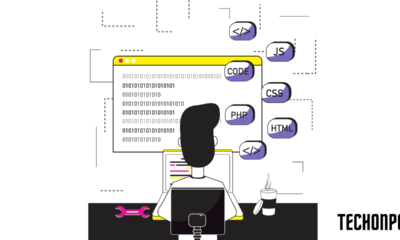Education
What are the differences between API integration & JavaScript integration for a third-party web service?
Published
2 years agoon
By
techonpc
differences between API integration & JavaScript integration
This question has a simple answer and a complicated one too. For the simplest understanding, a JavaScript Integration for a third-party web service is the same as an API Integration in that it consumes a third-party API from the system, with the exception that it does not directly consume the API from the developer’s code.
The third-party API is accessed via a JavaScript library or SDK, which in turn calls it. The JavaScript library or SDK serves as a wrapper over the third-party API, making all of its functionality available.
However, you might have your doubts unclear even with the above explanation. So, here in this article, we will take you through a small briefing on both API integration and JavaScript integration for third-party clarity.
Let’s start before you think about getting API Integration services without understanding it deeply!
What is API integration?
In order for systems to exchange data sources, two or more programs must be connected via their respective APIs (application programming interfaces). API interfaces enable activities across multiple departments and organizational levels to keep data synchronized, increase efficiency, and generate income.
An API is a part of practically everything in the digital world. APIs make it possible for apps and web systems to operate and perform without interruption, regardless of the industry or size of the firm.
But, we are asking about third-party integrations? So, what is it?
What are third-party APIs?
Third-party APIs are made available by other parties, typically businesses like Facebook, Twitter, or Google, that you may use on your website to access and utilize their functionality. One of the most obvious instances is using mapping APIs to display personalized maps on your pages.
There is an example of it. You can see it when a ride-hailing app (such as uber) incorporates the ability to track rides using Google Maps’ Map capability. Uber saves time using a third-party API rather than developing map functionality from scratch.
What is third-party API integration?
It just entails integrating a third-party provider’s API with your program. The supplier continuously updates it, and for this purpose, unique developer keys are used to enable the connection. For third-party API integration in Android or iOS, the process calls for the skills of an experienced mobile developer or an expert for API integration services.
Creating your own map application is impossible since you would need to get the functionality and data that took Google and Apple years to develop. You’ll need maps and routes in an app for food delivery. Simply connecting to their system via APIs and paying them for several queries is far simpler, less expensive, and more efficient.
Pros of third-party APIs include:
As the third party allows you to get many things done, you must know that it comes with huge benefits, especially in web or app development.
- Fast production
- Lower costs
- High-quality features
Cons of third-party APIs include:
Maybe the API integration for third-party isn’t that much piece of the cake. It has its cons that you need to watch out for before integration.
- Overcomplicated infrastructure
- Going over budget
- Lack of customer support
- Lack of control over functionality
How is JavaScript integration any different from it?
A JavaScript programming technique called third-party JavaScript facilitates the development of highly distributable online apps. These applications can be arbitrarily loaded on any web page using simple JavaScript, unlike ordinary web applications that can only be accessible at one specific web URL.
Most likely, you have come across third-party JavaScript. Take ad scripts, for example, which produce and display tailored advertising on publisher websites.
Although ad scripts may not be popular with users, they enable web publishers to make money and remain in operation. Despite being present on millions of websites, almost all use third-party scripts delivered from different ad servers.
Pros of third-party JavaScript:
Small companies can have a lot of benefits with Small companies can third-party JavaScript. Let’s take an example of a B2B business owner. He has an application that hosts web forms for collecting consumer data from their clients.
Now, as an owner, he has a potential number of customers ready to jump to your application. But of course, he hesitates to redirect users to the external website without any apparent alliance.
Customers’ redirecting concerns can be addressed by letting them load your form application directly on their websites using third-party JavaScript.
- End-to-end transparency of all systems.
- It enables organizations to expand.
- The creation of client-side programs enables interaction with third-party online services.
Cons of the third-party JavaScript:
JavaScript from a third party isn’t all roses. These applications need a lot of work to write. Before releasing third-party JavaScript that will hold its own in the world, there are many traps and hacks you’ll need to avoid.
- The inability to influence client application modifications.
- Arbitrary code execution on client systems
- is sensitive information being leaked or revealed to outside parties.
Wrap up
As we said earlier, there is not much of a difference; the only that separates the both is the access to the code.
So, if you plan on building an app and need third-party integrations, you can hire a developer for API Integration services. They can even analyze your system and help you provide suitable third-party integration services.
So, keep all the points in mind and get on board with the best you have.
FAQs
1. What are the 4 types of API?
Public, partner, private, and composite are the four main forms of API that are frequently used in web-based applications. The “type” of the API, in this case, denotes the intended application.
2. Which is the most widely used API for web services?
- JSON-RPC.
- XML-RPC.
REST is the most popular web service API, comprising more than 80% of all API types used for web services.
Follow Me

Unleashing the Power of the Office Accelerator: Maximizing Productivity and Efficiency in the Workplace with Office 365 Accelerator

Unlocking the Hidden Potential of Your Website: Strategies for Growth

From AI to VR: How Cutting-Edge Tech Is Reshaping Personal Injury Law in Chicago
Trending

 Microsoft4 years ago
Microsoft4 years agoMicrosoft Office 2016 Torrent With Product Keys (Free Download)

 Torrent4 years ago
Torrent4 years agoLes 15 Meilleurs Sites De Téléchargement Direct De Films 2020

 Money4 years ago
Money4 years ago25 Ways To Make Money Online

 Torrent4 years ago
Torrent4 years agoFL Studio 12 Crack Télécharger la version complète fissurée 2020

 Education3 years ago
Education3 years agoSignificado Dos Emojis Usado no WhatsApp

 Technology4 years ago
Technology4 years agoAvantages d’acheter FL Studio 12

 Technology4 years ago
Technology4 years agoDESKRIPSI DAN MANFAAT KURSUS PELATIHAN COREL DRAW

 Education3 years ago
Education3 years agoBest Steph Curry NBA 2K21 Build – How To Make Attribute, Badges and Animation On Steph Curry Build 2K21

You must be logged in to post a comment Login